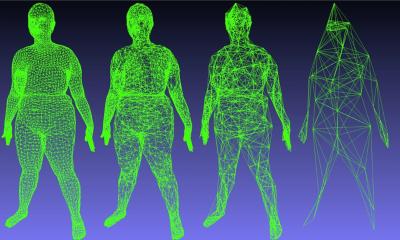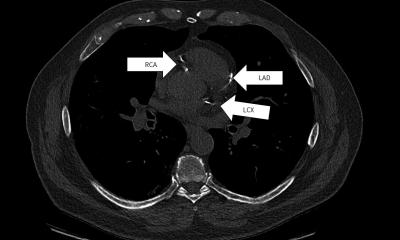CTA benefits coronary artery bypass graft patients
Cardiac CT angiography (CTA) performed after coronary artery bypass grafting surgery can reveal a high prevalence of unsuspected cardiac and significant non-cardiac findings that might otherwise be overlooked, according to a study by researchers at the University of Maryland Medical Centre, Baltimore ('Cardiac CT Angiography after Coronary Bypass Surgery: Prevalence of Incidental Findings', Pub: American Journal of Roentgenology [August. 189:414-419]).

This capability of CTA performed after major cardiovascular surgery has the potential to detect earlier treatable cardiac and non-cardiac complications that are not suspected at the time of the surgery or the CTA examination.
This first study of its kind, involving 259 postoperative cardiac patients or inpatients at the University of Maryland Medical, revealed that 20% had at least one potentially significant finding requiring therapeutic intervention or further radiologic evaluation. Without a CTA procedure, necessary treatment may not have been initiated.
Lead author Jeffrey S Mueller MD, a radiologist currently affiliated with Allegheny General Hospital (Pittsburgh, PA), wrote that the ‘rate of incidental findings (compared with other peer-review published studies) may be higher because thinner reconstructions were used and IV contrast was administered’. The retrospective study evaluated patients between 10/02 and 3/06.
Dr. Mueller and his colleagues identified 24 patients who had at least one significant cardiac finding, 34 who had at least one significant non-cardiac finding, and seven who had both. The most common cardiac findings were moderate or large pericardial effusions, intracardial thrombus, and substantial paracardiac or mediastinal haemorrhage. Non-cardiac abnormalities included pulmonary nodules, pneumonia, lobar mucous plugging, and pulmonary embolism. One patient had a lung carcinoma.
Among the 259 patients, 40 had a routine follow-up cardiac CTA in the late postoperative period (mean 12.7 months). Of these, seven patients, or 17.5%, were identified with an incidental and unsuspected finding.
The researchers strongly recommend the utilisation of CTA for postoperative in-patients. They caution that the findings cannot be applied to patients with only suspected coronary artery disease.
31.08.2007











